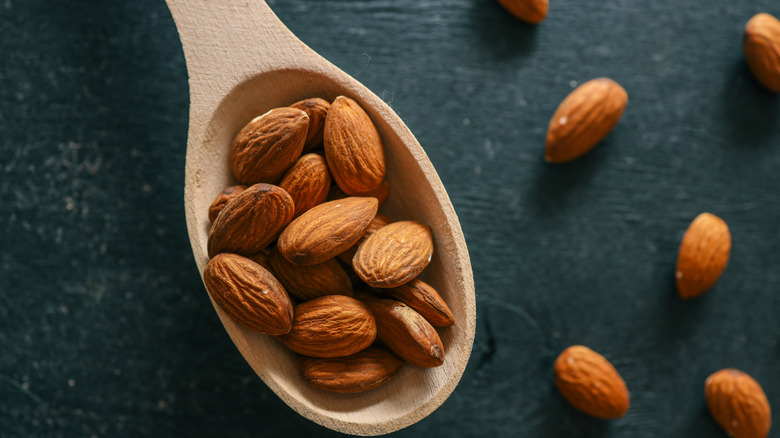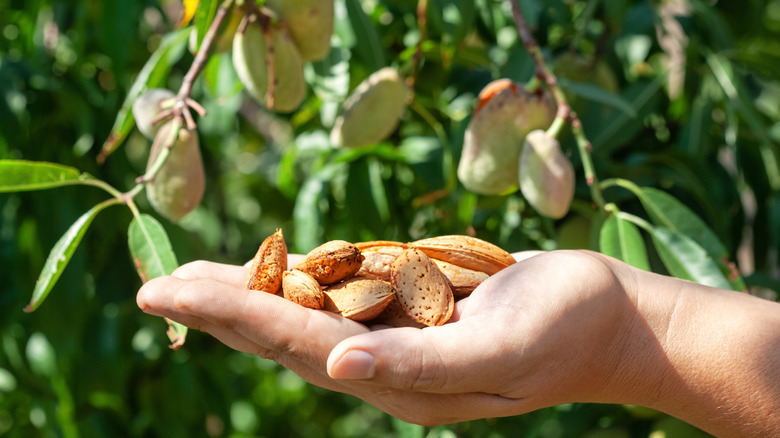The Country That Produces More Almonds Than The Rest Of The World
There are many delightful snacks to munch on by the handful, but few top almonds. Filling, nutritious, and tasty — especially with a bit of seasoning — it's no wonder they're among the most widespread nuts. And while scooping up another handful, you may wonder where most of these edible seeds are produced.
When it comes to climate, almond trees are particular, favoring Mediterranean-like conditions at a specific latitude. First harvested in the Middle East, they remain common around the Mediterranean Sea, where the trees originally grew before cultivation. Yet today, it's the United States that leads global production, far outshining other countries. In fact, according to the World Population Review, the U.S. produced over 1.8 million tons in 2022 — more than five times the output of the runner-up, Australia.
Nearly all of that production occurs in California, meaning the one state accounts for the majority of the world's almond supply. So next time you're biting into the nut — or sipping almond milk instead of oat — think of the Golden State.
The United States grows a variety of almonds
Think of an almond, and a seemingly simple, oval-shaped nut comes to mind. Yet this foodstuff comes in a remarkable number of varieties, with over two dozen grown in California alone. Each type has its designated use. Varieties like Butte and Padre — especially common in the state — are often candied or roasted for snacking. Carmel almonds, with their meatier composition, are better suited for slivering, while Mission almonds are ideal for making milk. Thanks to this multitude of species, California supports a broad array of almond applications.
Still, some notable almonds hail from beyond the U.S. You've likely heard of Marcona almonds — Ina Garten's favorite. Though also cultivated in California, they're especially prized when sourced from Spain, offering a distinctive mouthfeel and flavor that makes them a terrific bar snack (and Spain ranked third in global almond production in 2022).
Second place goes to Australia, where almonds are grown predominantly in the state of Victoria. The Australian Nonpareil variety is the most common, with much of it exported to Asia for snacking. So whether you're tossing toasted almonds into a smoky kale salad, sipping Amaretto liqueur, or making an almond milk latte, take a moment to appreciate this nut's global complexity.


